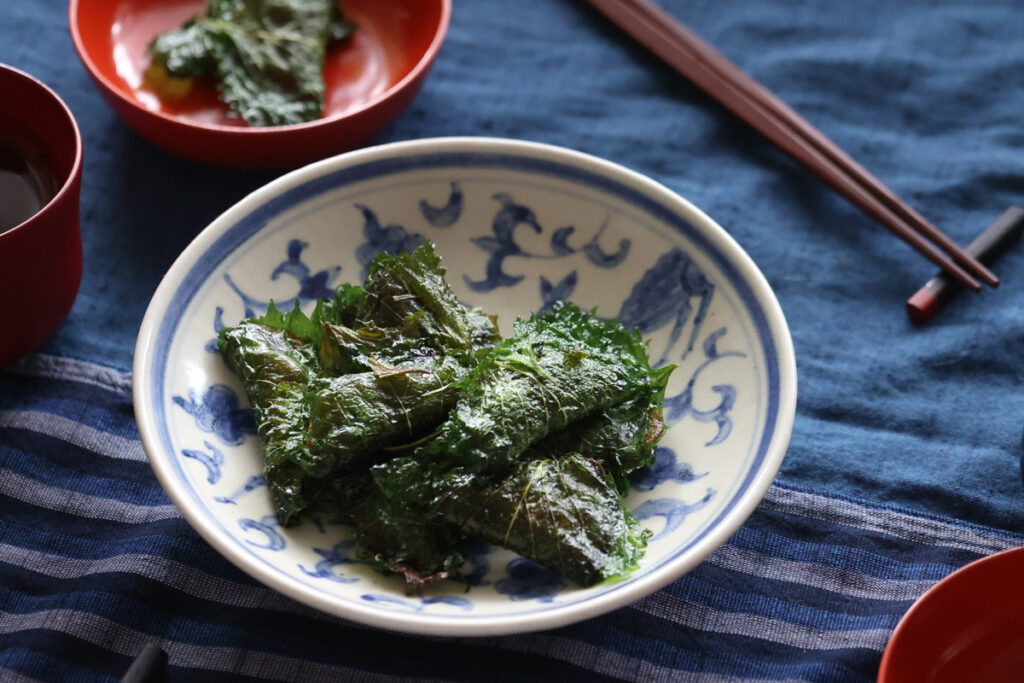
Ingredients (makes 10–12 pieces)
50 g hakurikiko / “soft” wheat flour
50 g water
1 tbsp miso
10–12 aojiso / green shiso leaves
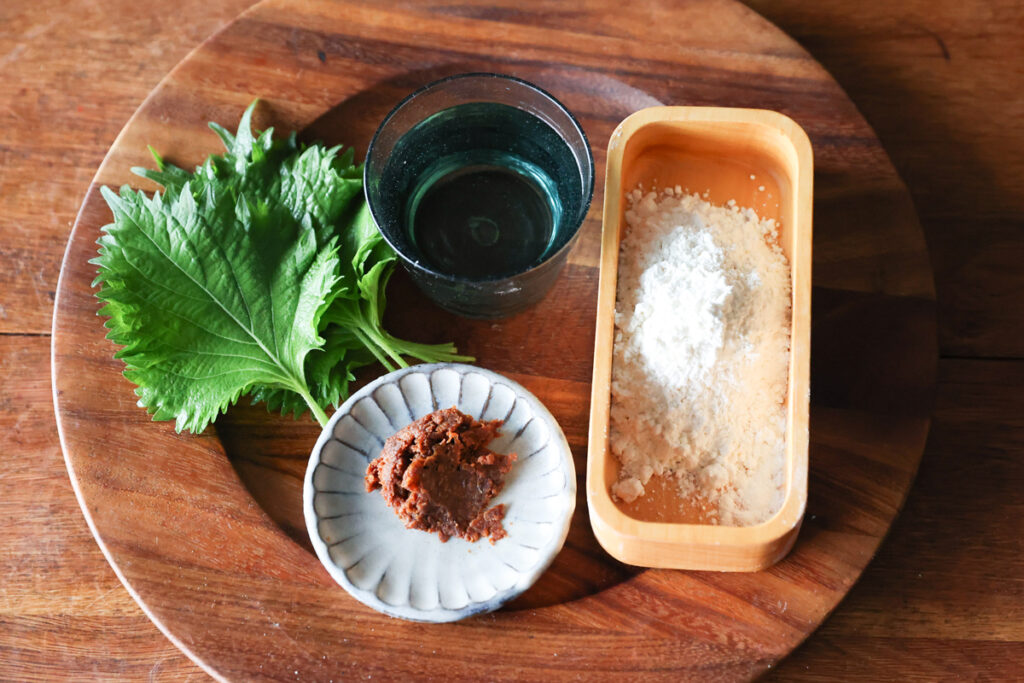
How to make
1. Place the miso and water in a bowl and mix. Add the low-gluten “soft” wheat flour and blend. Rinse the green shiso leaves and blot dry.

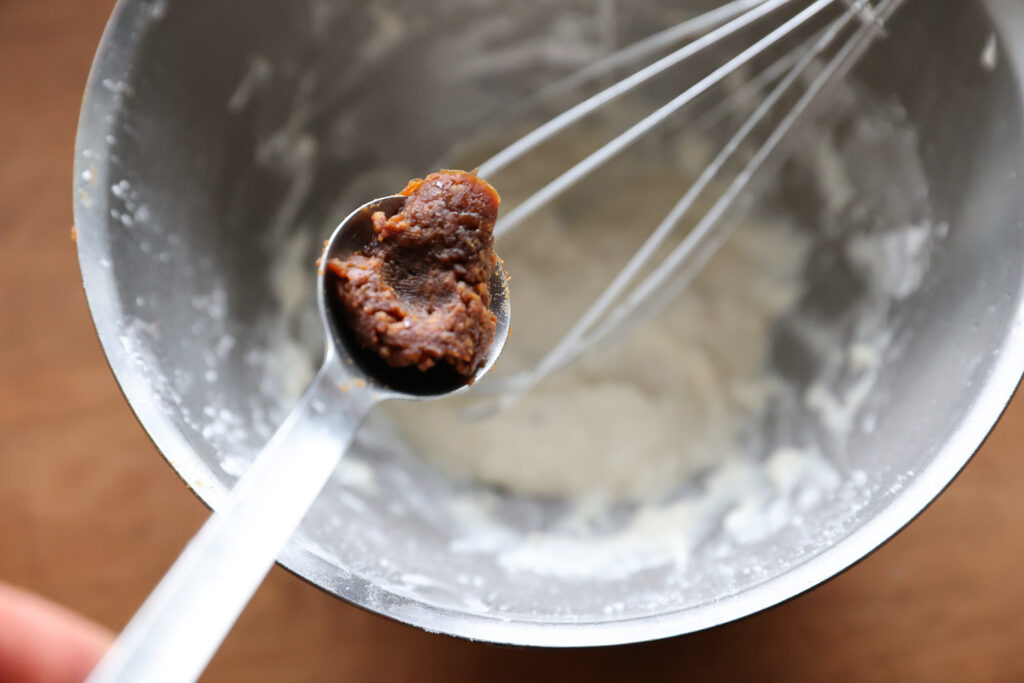
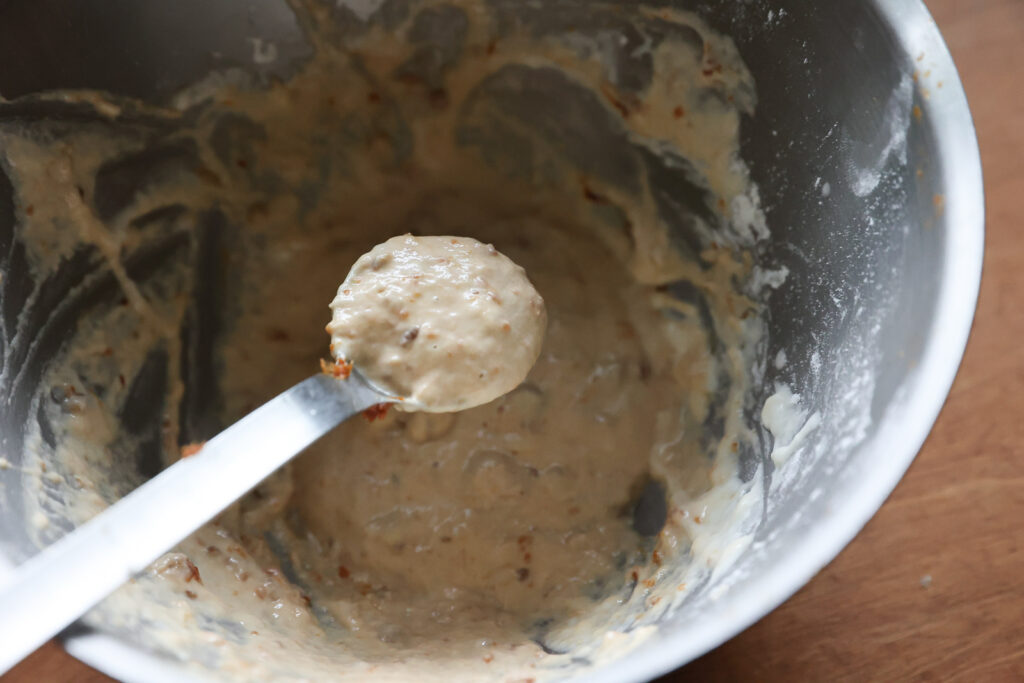
2. Lay the shiso leaves right side up, and top with small spoonsful of the dough. (Alternatively, the dough can be placed on each leaf while it’s frying; however, it’s easier to place the toppings on all the leaves beforehand.)
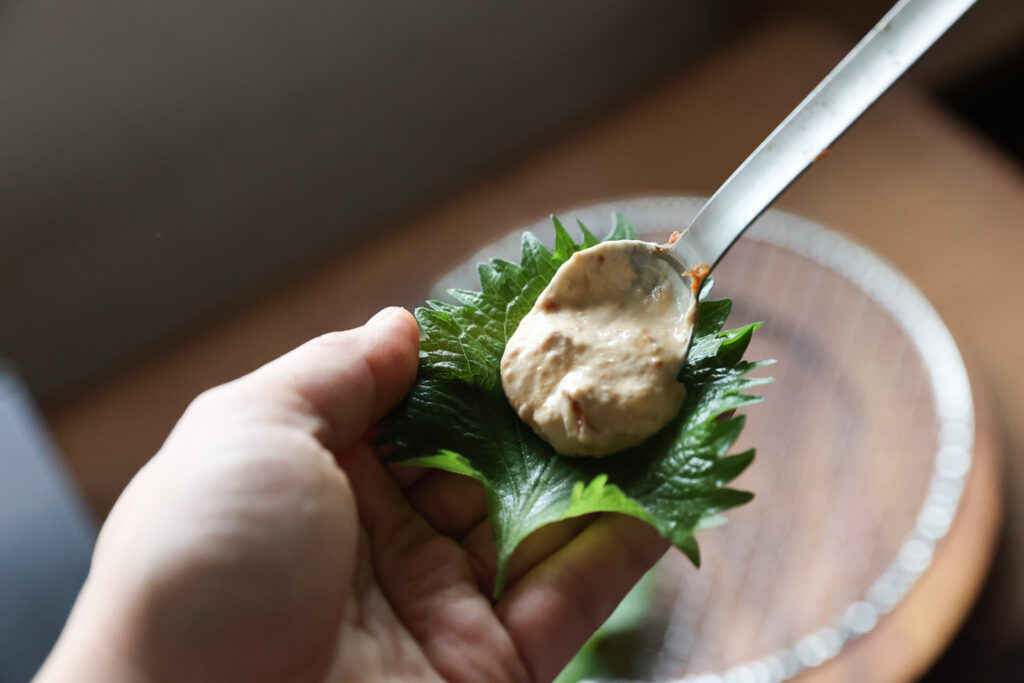
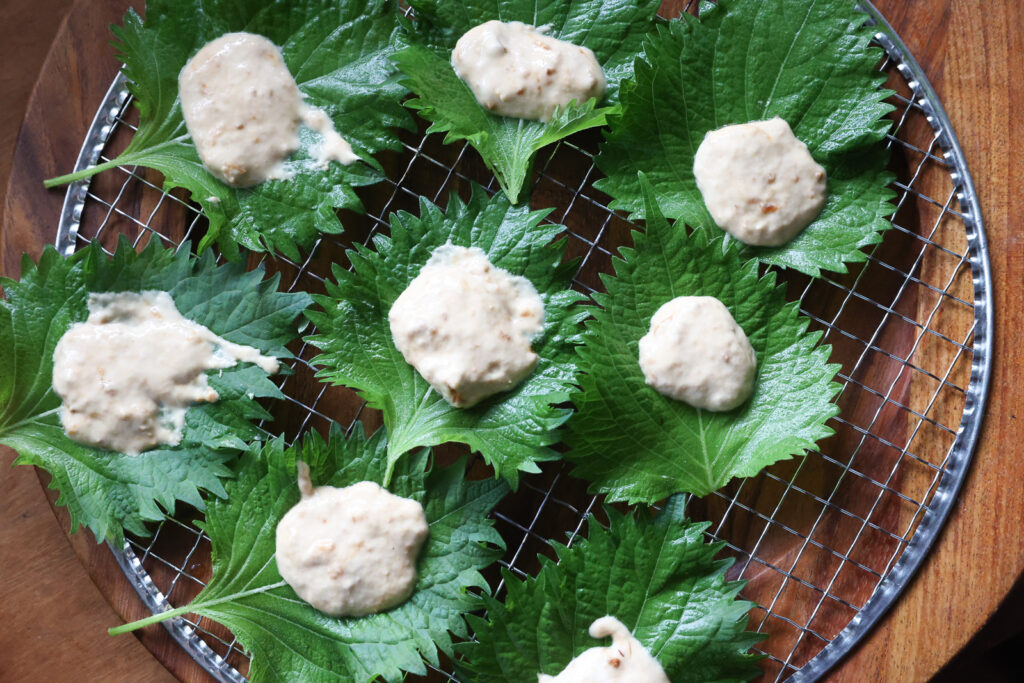
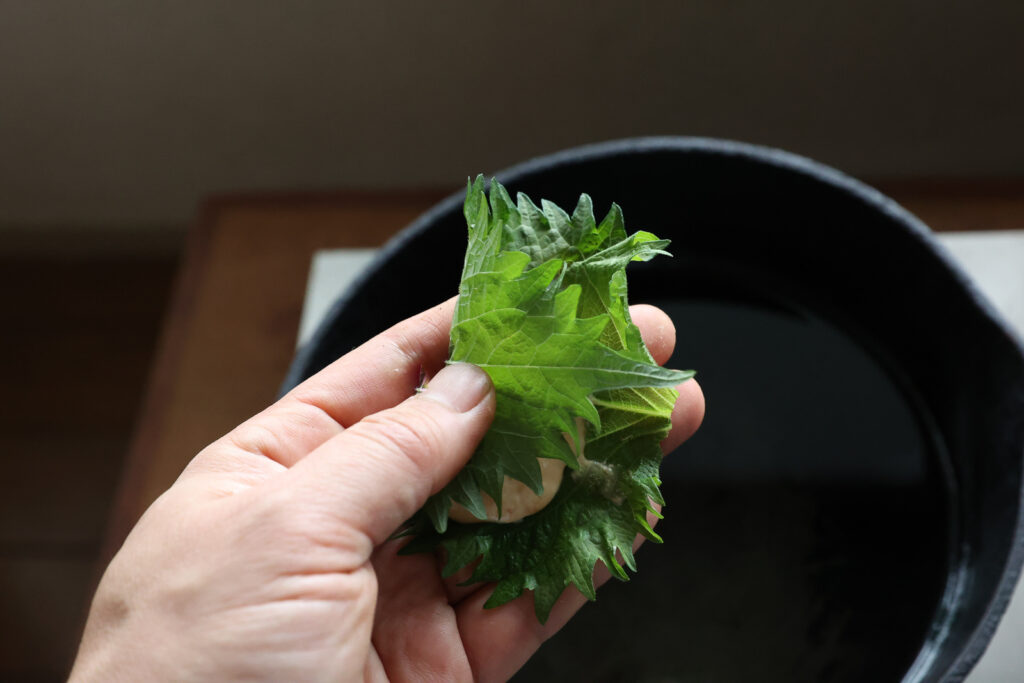
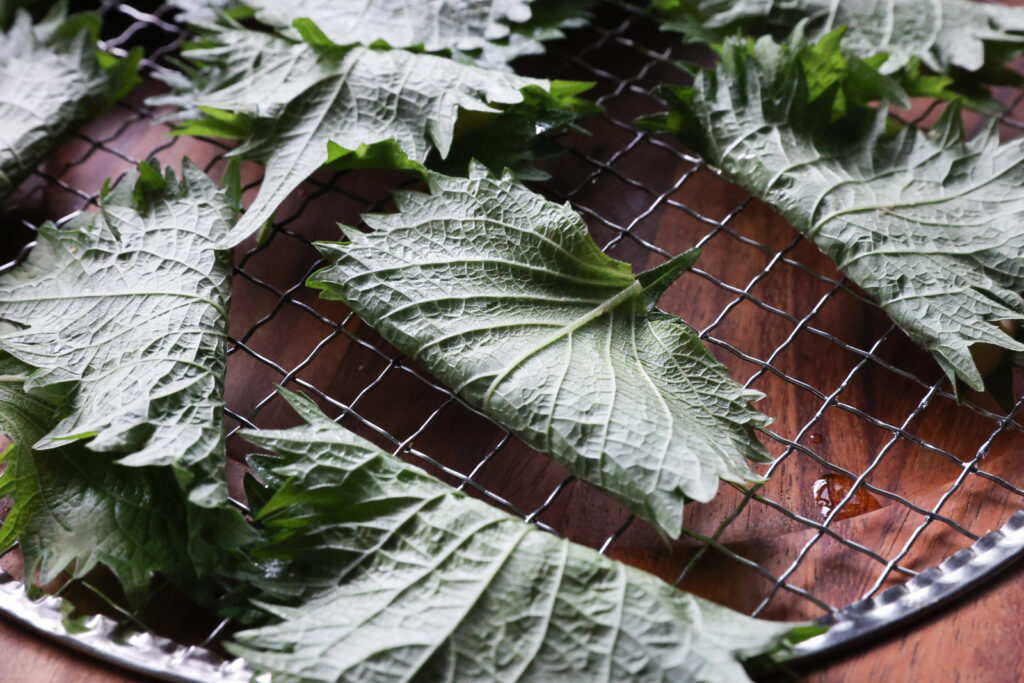
3. Heat some frying oil to a low temperature of about 140℃. Fold the shiso leaves in half to cover the dough, and fry until the leaves turn a bright green color.
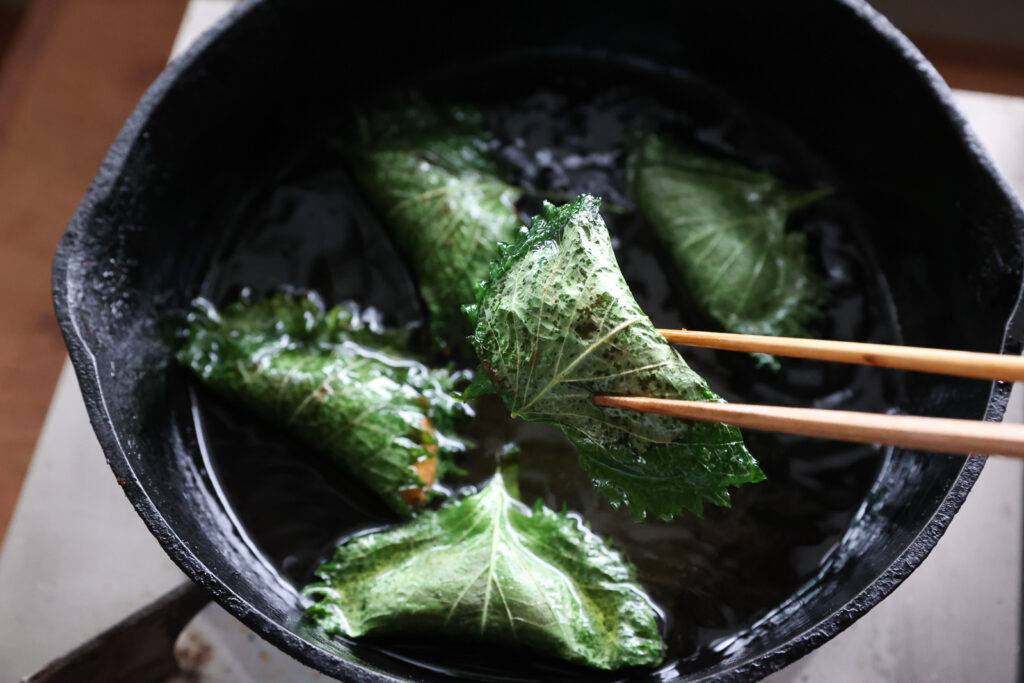
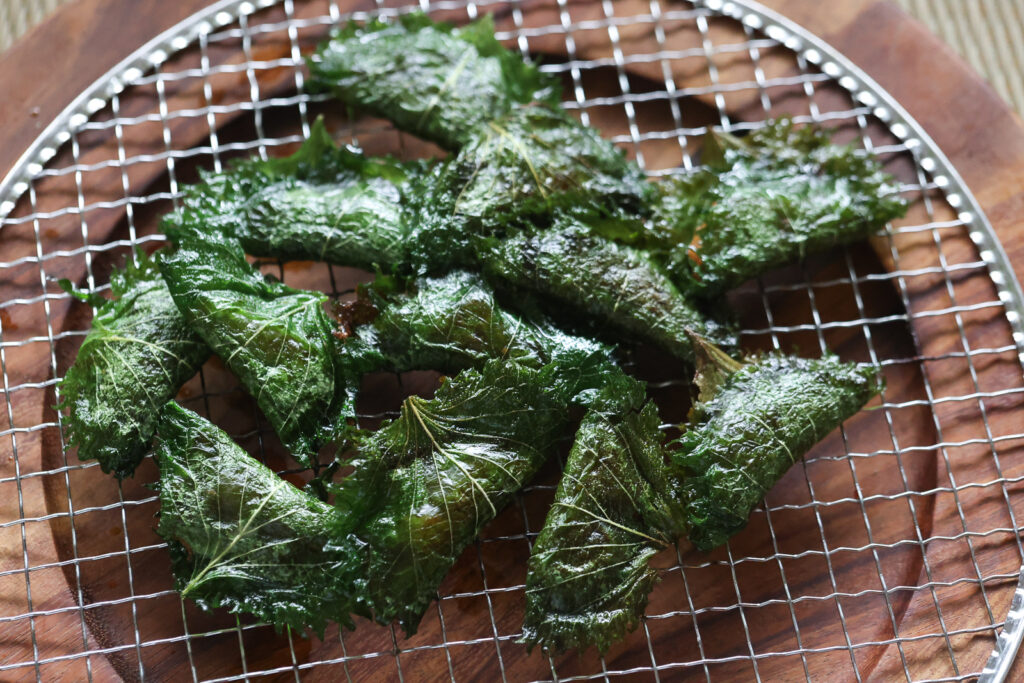
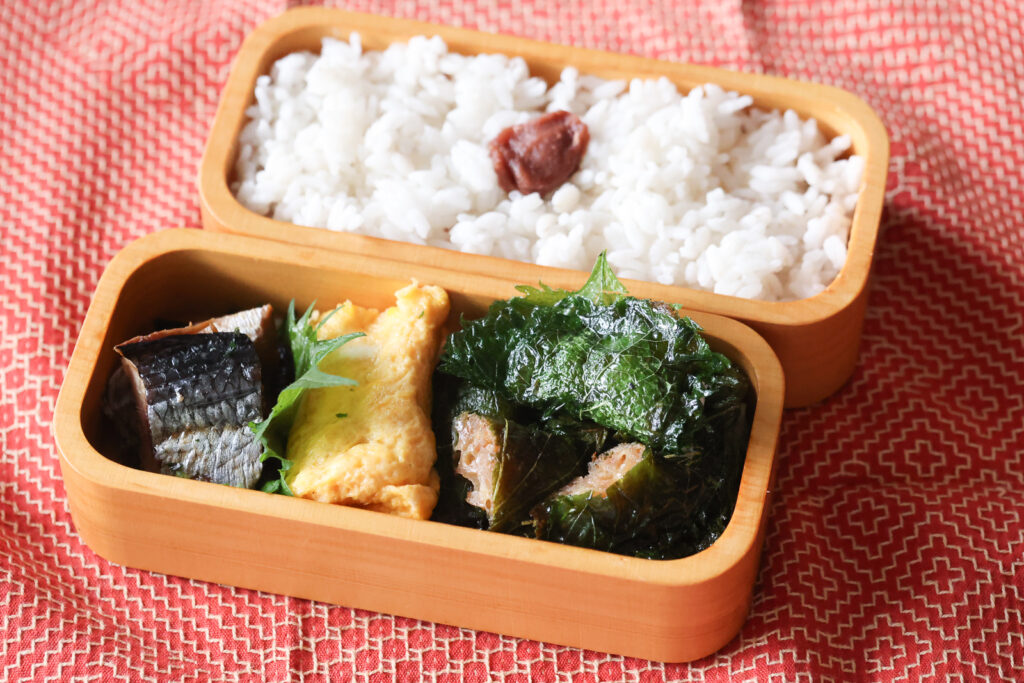
“I bet you haven’t had this goody before”— I was served this dish at a home I visited in Aizuwakamatsu. Take a miso-flavored, wheat flour-based dough, wrap it in green shiso leaves, deep fry, and voila—the sticky dough, crispy shiso, and flavor of miso are a perfect match! The treat can even stand in for a side dish in a bento box lunch. I asked what the dish is called, but the Aizu locals didn’t seem to have a formal name, and instead, made one up for me on the spot: shiso-age—literally “fried shiso.”
In Fukushima Prefecture and the wider Tohoku region of northeastern Japan, there is another recipe called shiso-maki, or “shiso roll,” made by blending walnuts into sweet miso, wrapping the dough in green shiso leaves, and sometimes coating this with rice flour or mochi flour before frying. Shiso-age must be a variation with a slightly larger amount of wheat flour. Every region has dishes that are enjoyed on a daily basis and therefore considered too casual for serving to guests. Shiso-age must be one such pleasure reserved for the locals.
This time I folded the shiso leaves in half, but it may be more common to roll the leaves. Some homes amp up the flavor by mixing sesame seeds into the dough, or by substituting wheat flour with okonomiyaki flour (containing aonori laver and dashi stock). Whatever version you try, the secret is to fry at a low temperature until the shiso leaves turn an appetizing bright green color. Delight in the special treat made with simple everyday ingredients.

minokamo | Cookery expert / Photographer
Gifu Prefecture native minokamo’s culinary adventures were inspired by her fond childhood memories of cooking with her grandmother. She researches, writes about, and arranges regional dishes that capture, through their preparation and presentation, sensory enjoyments inspired by local climate, history, and lifestyles. Ryori tabi kara tadaima(Back from a Cooking Journey; Fudosha), published in September 2020, is a collection of recipes from minokamo’s visits to homes up and down Japan. Kona 100 mizu 50 de tsukuru suiton (Suiton Recipes—Flour 100 Water 50; Gijutsu-Hyoron) is now out.












